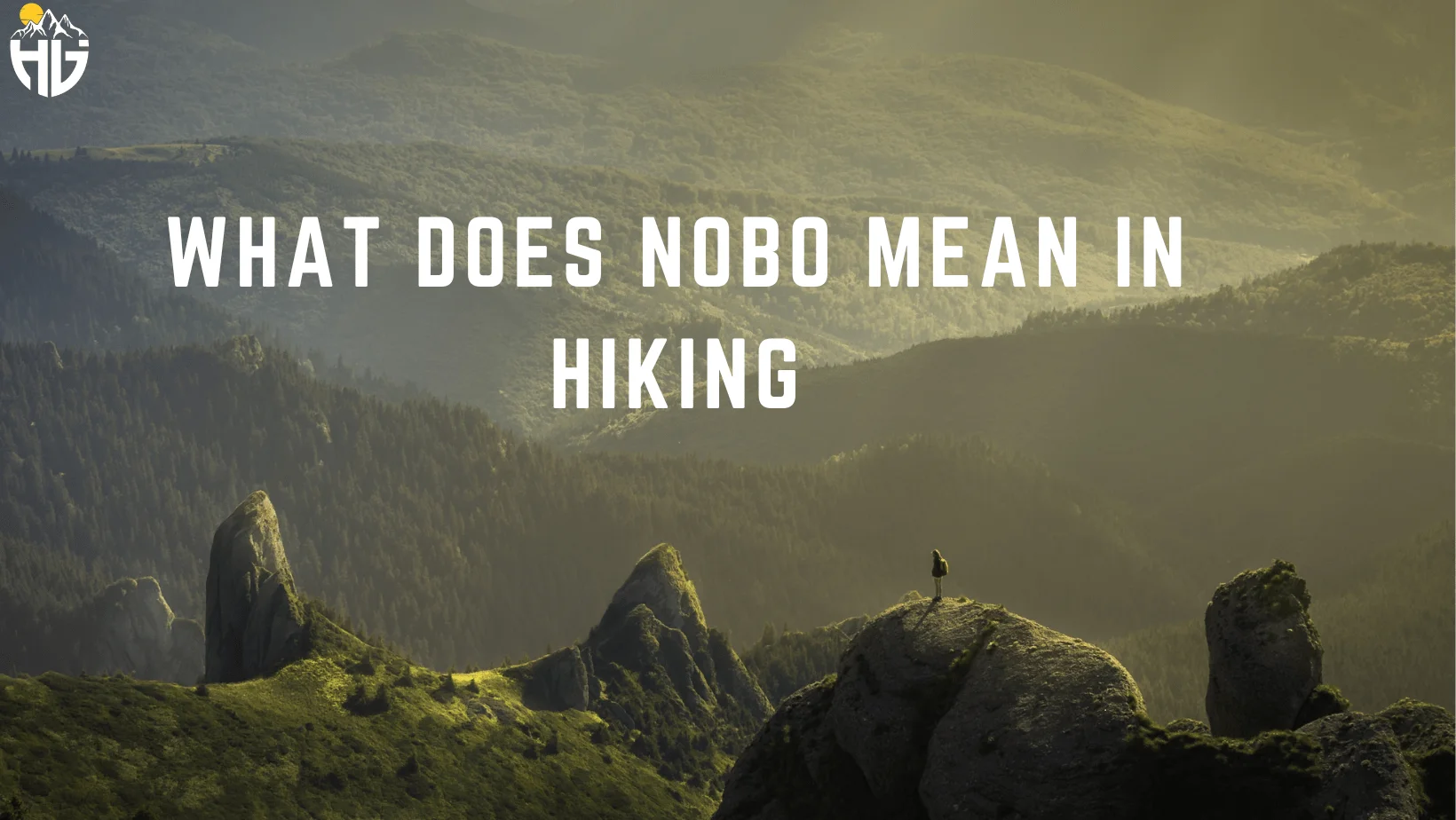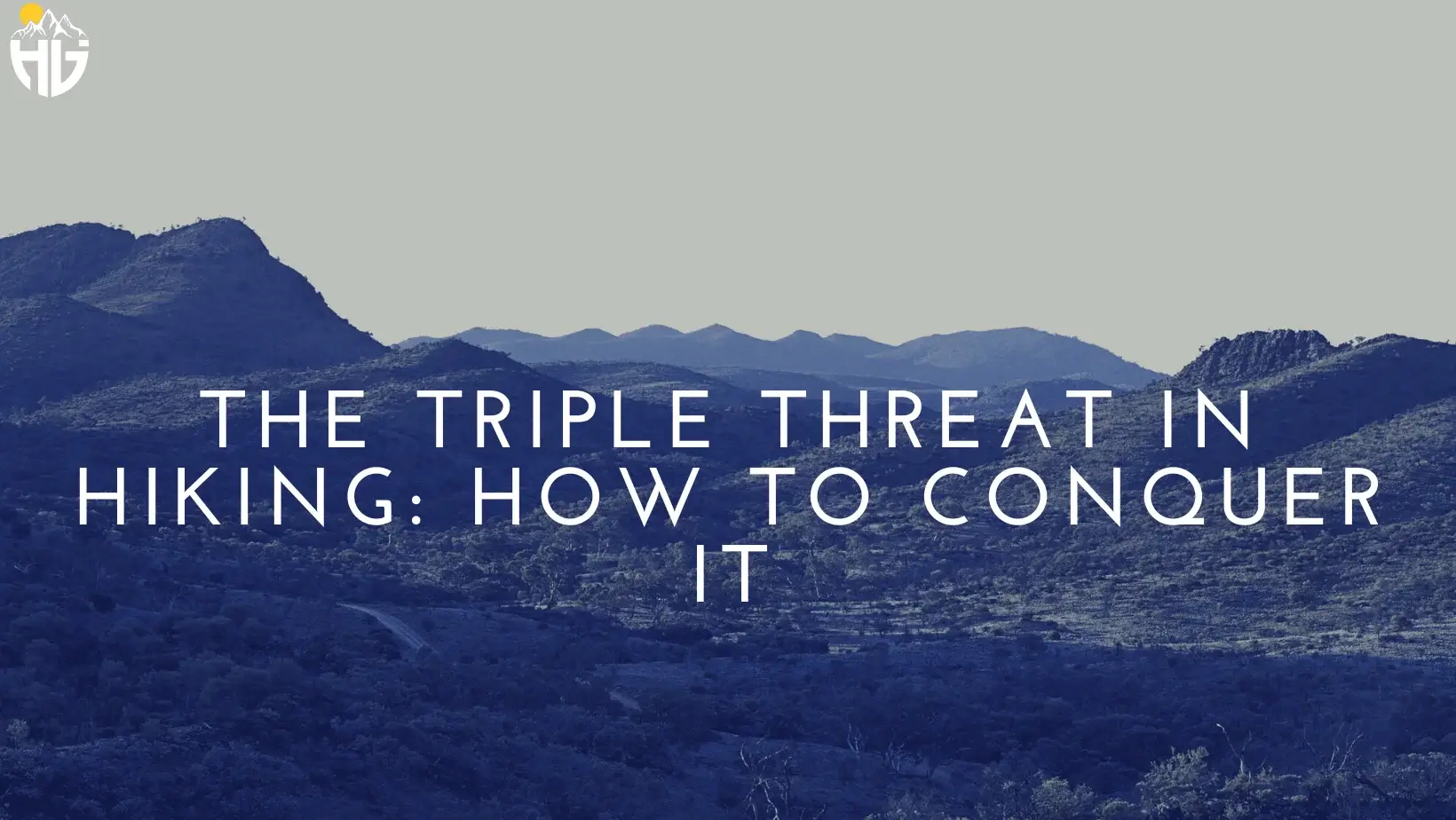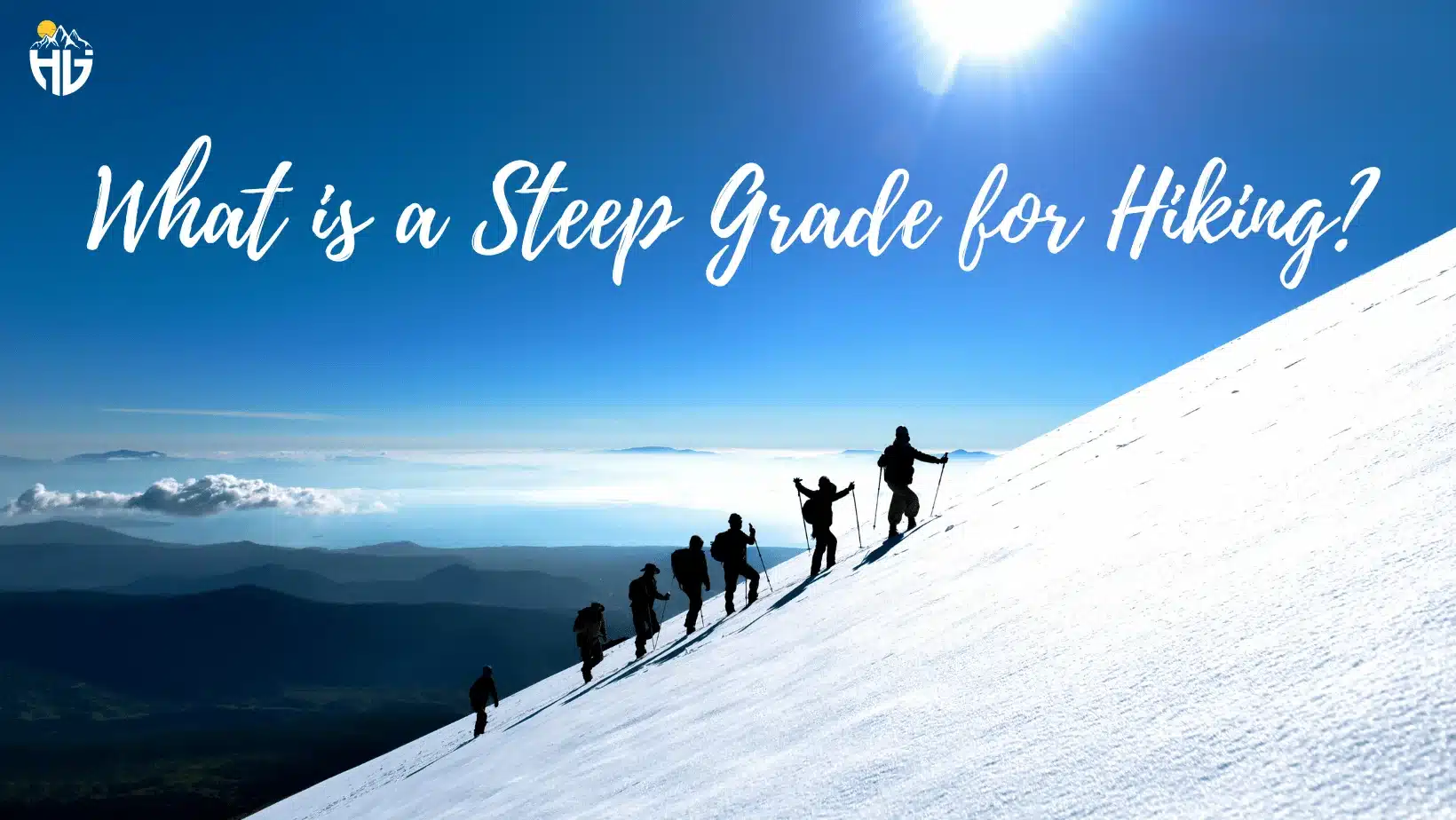Why Does Your Knee Hurt When Hiking Downhill?

Does your Knee hurt whenever you are hiking downhill? It is a common complaint among hikers, especially on downhill descents. Overuse, bad form, and defective equipment are all potential causes of pain.
In this article, we’ll look at the causes of knee pain while hiking downhill and effective methods to manage and avoid it. We’ll discuss the importance of appropriate equipment, form, and strengthening exercises for knee health. Following our advice can make your next downhill hike pain-free and pleasant.
Cause of knee pain when hiking downhill
Understanding the causes of knee disorder during hiking downhill can help avoid and treat it. This section covers the most common downhill hiking knee pain causes.
Knee Injury
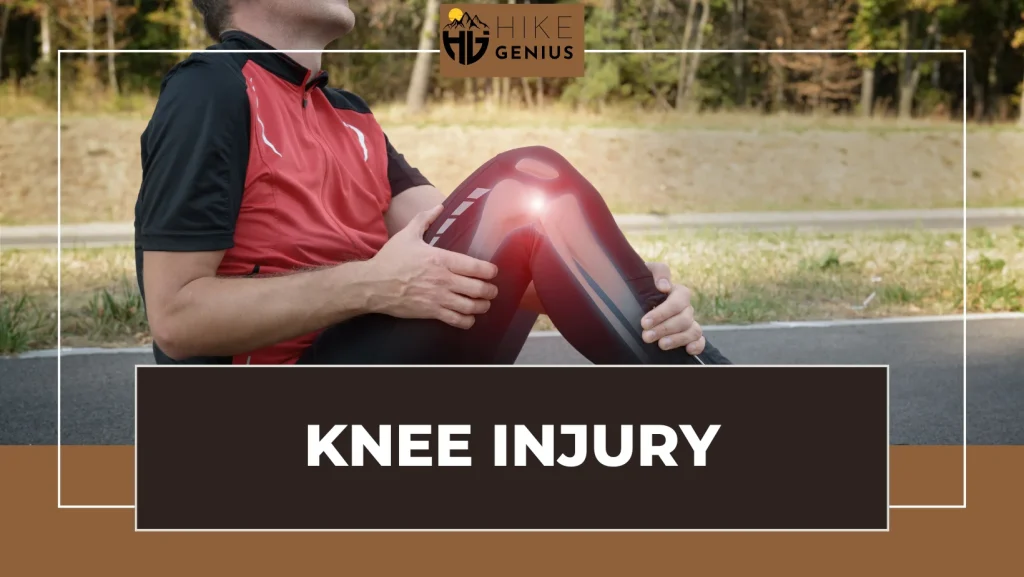
Knee injuries, including sprains, strains, and fractures, often are the results of hiking downhill. It can cause such injuries. These injuries cause mild to severe pain and swelling or stiffness.
Knee Inflammation

Bursitis and tendinitis cause inflammation. Bursitis inflames the small, fluid-filled sacs that cushion the knee joints, while tendinitis inflames the tendons that connect the muscles to the knee. Pain and swelling from inflammation can limit knee movement.
Knee Strain
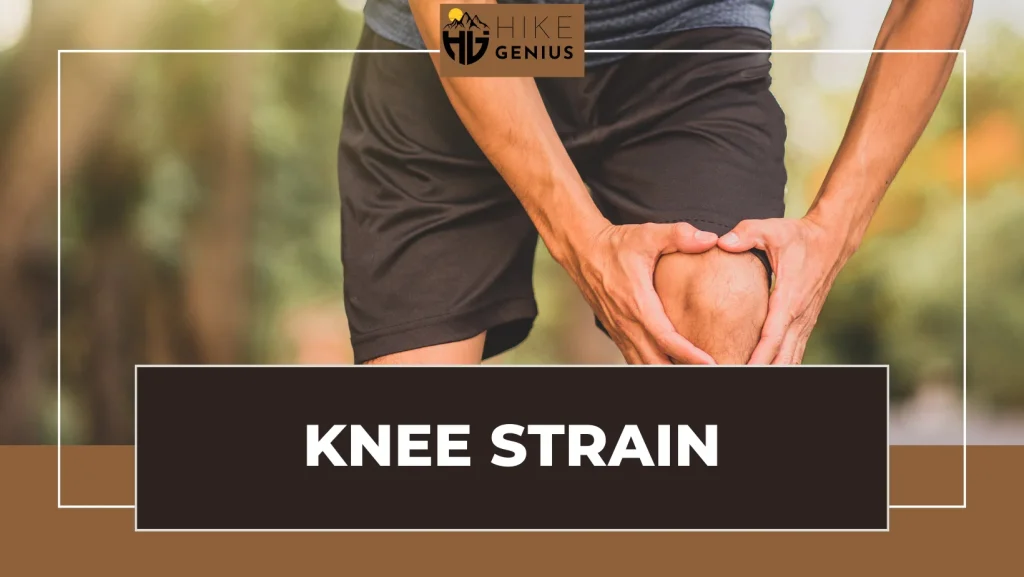
When hiking downhill, knee problems are also often caused by strain. This can happen if you use your knees too much or twist them quickly, which can cause the ligaments to stretch or tear. Knee strain can cause a lot of pain, making walking or standing hard.
Also Read: How to Train for Hiking?
Knee Arthritis
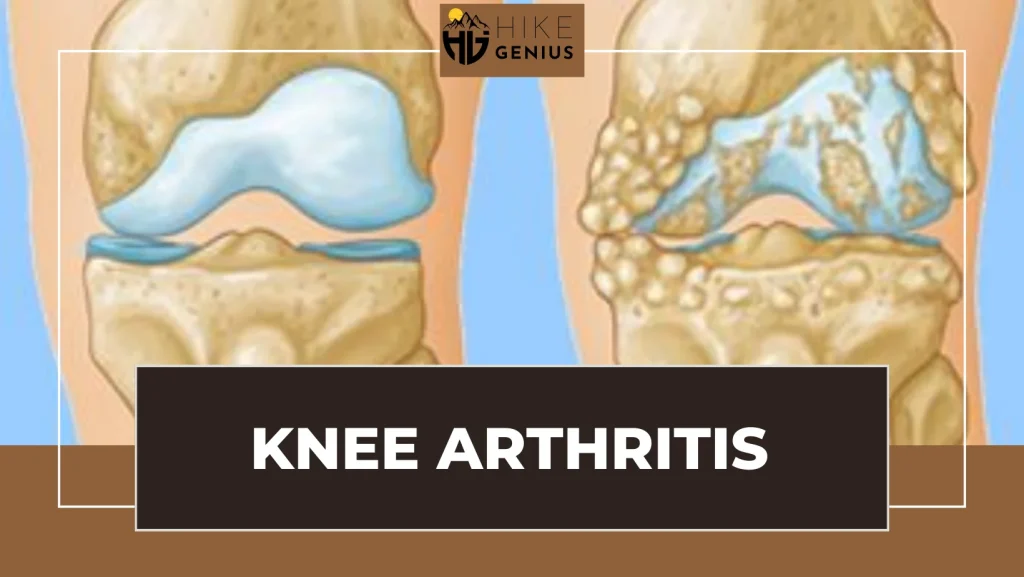
Arthritis is a disease that makes the joints swell up and break down. Knee arthritis can make the knee painful, stiff, and swollen, which makes it hard to hike downhill. Osteoarthritis and rheumatoid arthritis are the most common types of arthritis that affect the knee joints.
Patellofemoral Pain Syndrome

It is a condition that makes the area around the kneecap hurt in the front of the knee joints. When hiking downhill, the knee joint is put under more stress, which can worsen this pain. Overuse, an injury could cause pain or the patella not being in the right place.
Anterior Knee Pain
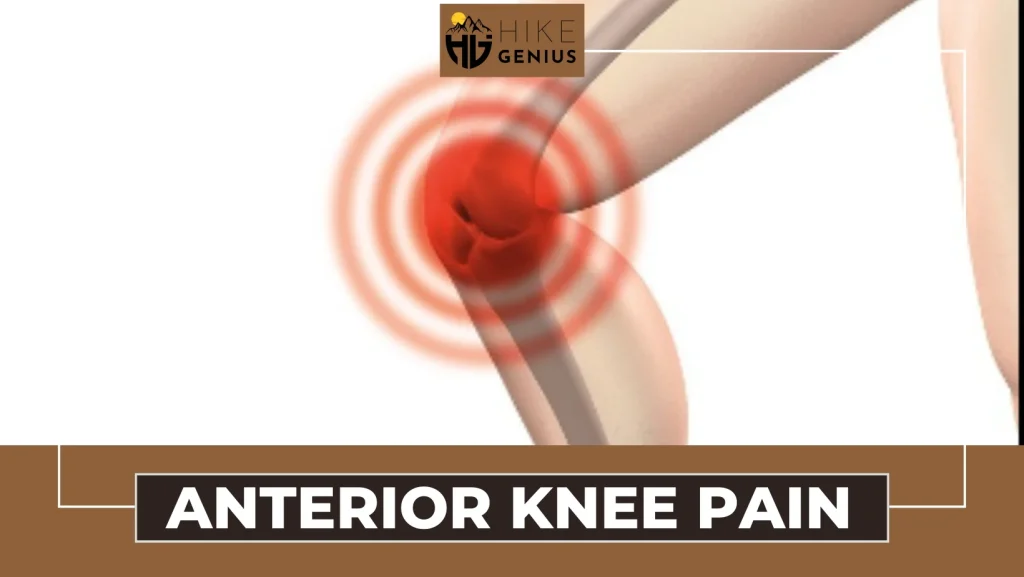
This causes pain in the front of the knee joint. This can happen for several reasons, such as overuse, injury, or the knee joints not being in the right place. When hiking downhill, pain in the front of the knee can worsen, making it hard to keep hiking.
Struggling to Find Hiking Partners?
Why does the Knee Hurt When Hiking Downhill But Not Uphill?

Biomechanics involved in downhill walking
Walking downhill, your body moves differently than on the flat ground or uphill. The body’s weight moves forward, putting more pressure on the knees to keep the movement under control. This makes the quadriceps muscles in the thighs work harder to keep the upper body balanced and slow its forward motion. And that’s why your knee may hurt when you are hiking downhill.
Impact of gravity and body weight distribution
Gravity is a big part of hiking downhill because it pulls the body down, making it harder to stay in control. Also, your body weight shifts to the front of the feet and knees, which is not the same as walking uphill. This extra weight and pressure on the knees can be painful and uncomfortable, especially when walking for long periods or up steep hills.
Contributing factors in causing knee pain when hiking downhill than hiking uphill
- Muscle imbalances: Imbalanced leg muscles that support your knees, like the quadriceps or glutes, are weak, hiking downhill can be harder on the knee.
- Overuse injuries: Walking downhill repeatedly can wear out the knee joint and you will start to feel pain, swelling, and injury.
- Poor technique: Incorrect posture or walking form can put added stress on the knees.
- Previous injuries: Individuals with a history of knee injuries or surgeries may experience knee pain.
- Hiking shoes: Worn-out or unsupportive hiking boots can contribute to knee problems.
- Hiking trail: Walking on steep, rocky terrain can increase the risk of knee disturbance.
- Age: As individuals age, the knee joints may experience wear and tear, leading to knee disorders.
How to Manage Knee Joint Pain Walking Downhill But Not Uphill?
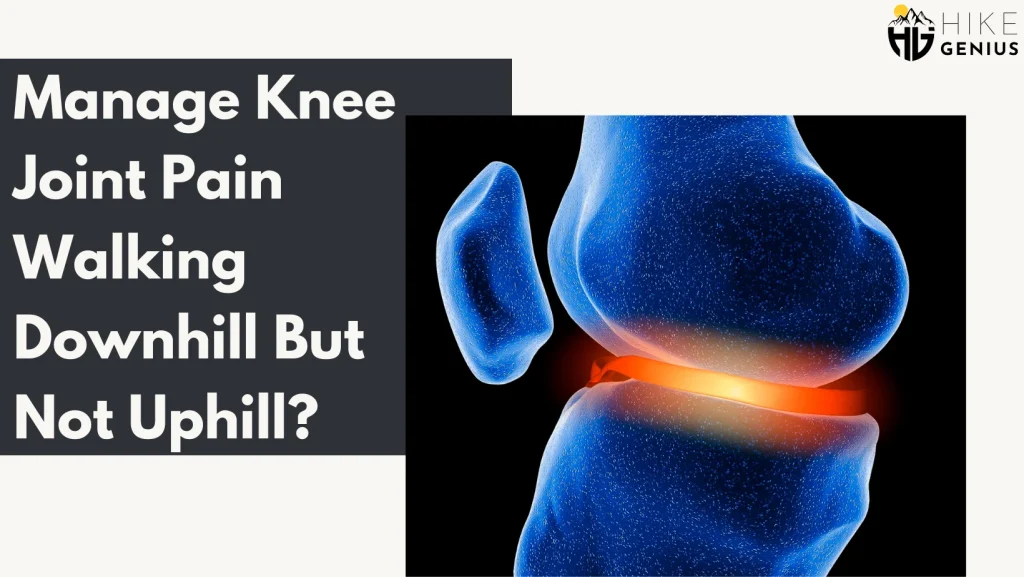
Knee problems can be frustrating and painful for many people when walking downhill. But there are several ways to deal with pain and keep it from getting worse. Here are some ways to deal with knee pain when trekking downhill but not when walking uphill.
Proper warm-up and stretching exercises
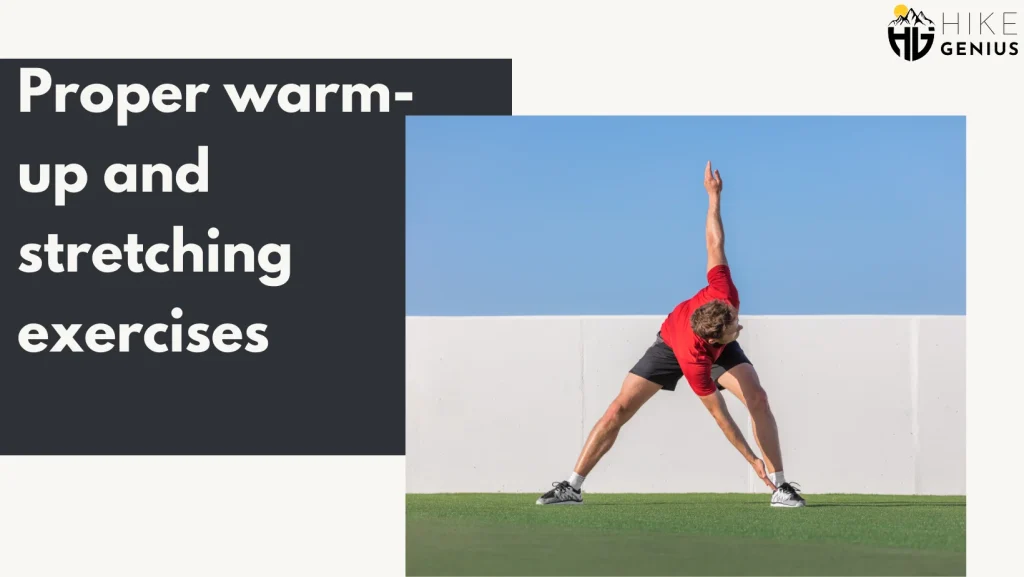
Before doing any physical activity, it’s important to warm up and stretch your lower body correctly. This can help in stabilizing muscles and prevent getting pulled or hurt. Before walking downhill, people should stretch out their quadriceps, hamstrings, and calves. These stretches can make your upper body more flexible and lessen your knees’ chance of hurting.
Use of knee braces or supports
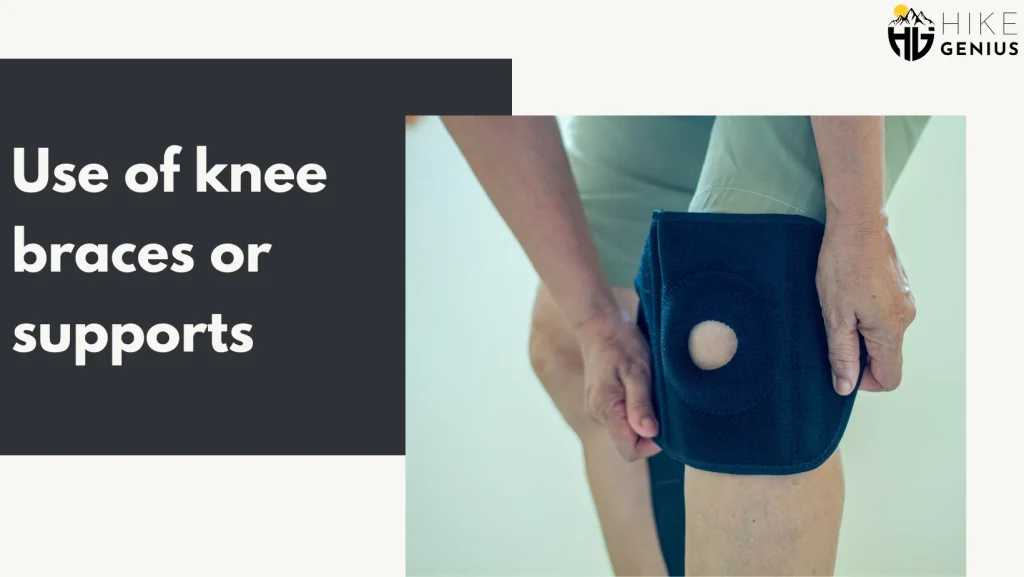
Wearing a knee brace or several trekking poles can help keep the knee joints stable when hiking downhill. This can help ease the pain and protect your knees from further injuries. There are several different kinds of knee braces, like sleeve braces, strap braces, and hinged braces.
If you do not have any knee support, you can always use hiking poles for more support. Remember, avoid adding your entire body weight and putting pressure directly on your knees. People should talk to a doctor to find out what kind of brace would be best for their particular condition.
Changes in walking technique or stride
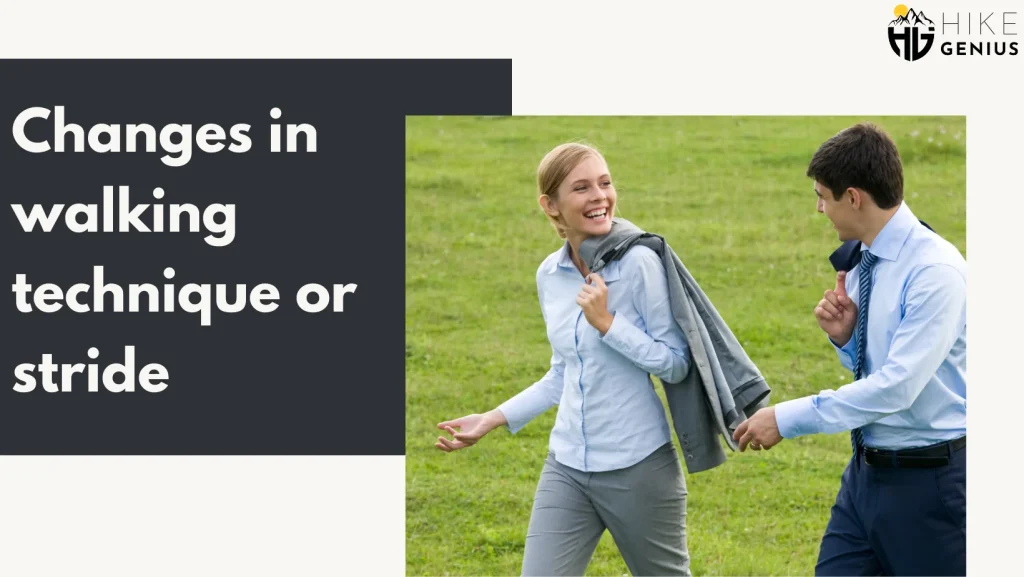
People can make it easier on their knees by taking shorter steps, walking with a wider stance, and walking more slowly. Also, people should try not to lock their knees when trekking downhill since this can put extra stress on the joint. Moreover, you should practice keeping your knees slightly bent while trekking downhill to lessen the load.
Rest and recovery

Resting and letting your knees heal are important ways to deal with knee problems when hiking downhill. Taking breaks on long walks or hikes can help ease pain and keep you from hurting yourself more. People should also avoid overdoing it and give themselves enough time to rest between activities.
Medical treatments
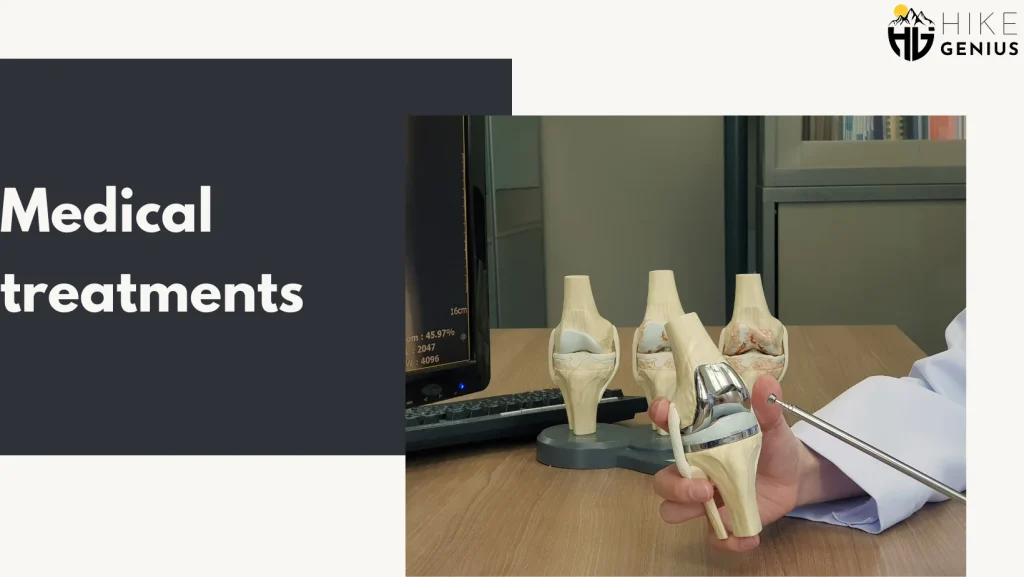
These treatments include physical therapy, medication, corticosteroid injections, and surgery. People should talk to a doctor to determine the best course of action for their particular condition.
Proper warm-up and stretching exercises, knee braces, hiking poles or other supports, changes in walking technique or stride, rest and recovery, and medical treatment when needed can help manage knee disturbance while hiking downhill but not uphill. These steps reduce pain, prevent injury, and allow people to continue their favorite activities.
First Aid Treatment for Knee Problems During Downhill
If your knee hurts while hiking downhill, you must give it first aid to keep it from worsening and help it heal. Here are some first-aid things you can do if your knee hurts when you’re hiking downhill:
RICE (Rest, Ice, Compression, Elevation)

Rest: Avoid putting weight on the affected knee as much as possible to prevent further injury.
Ice: Apply an ice pack or cold compress on the affected knee for 15-20 minutes every hour. This helps reduce swelling and pain.
Compression: Wrap the affected knee with an elastic bandage to help reduce swelling and provide support.
Elevation: Raise the affected leg above the heart level to promote blood flow and reduce swelling
Pain medication

Over-the-counter pain medications such as ibuprofen or acetaminophen can help relieve pain and reduce inflammation.
Physical therapy
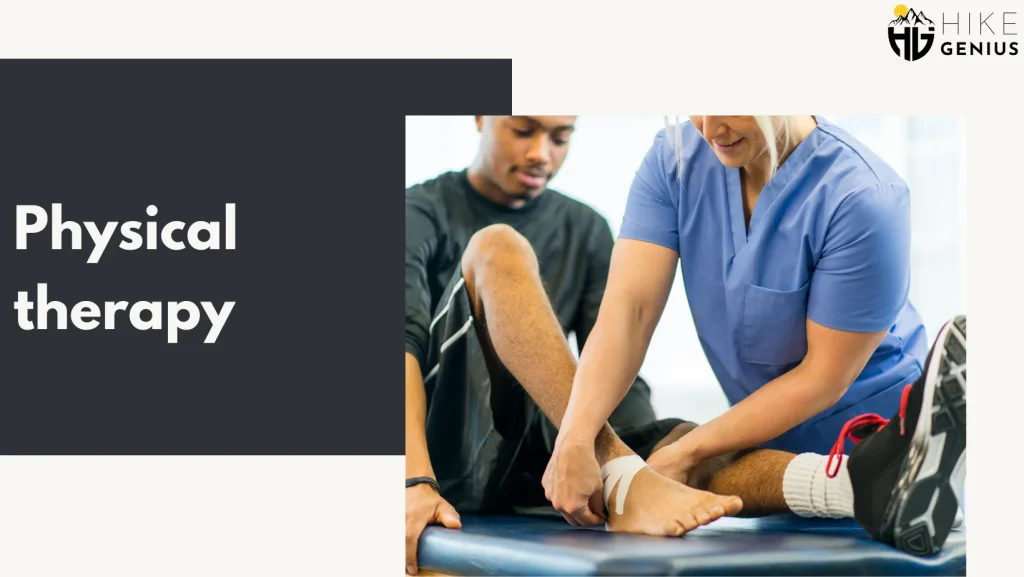
Physical therapy exercises can help strengthen the muscles surrounding the knee, improve flexibility, and reduce pain. A physical therapist can also teach you techniques on how to move properly to prevent further injury.
Surgery (for severe cases)
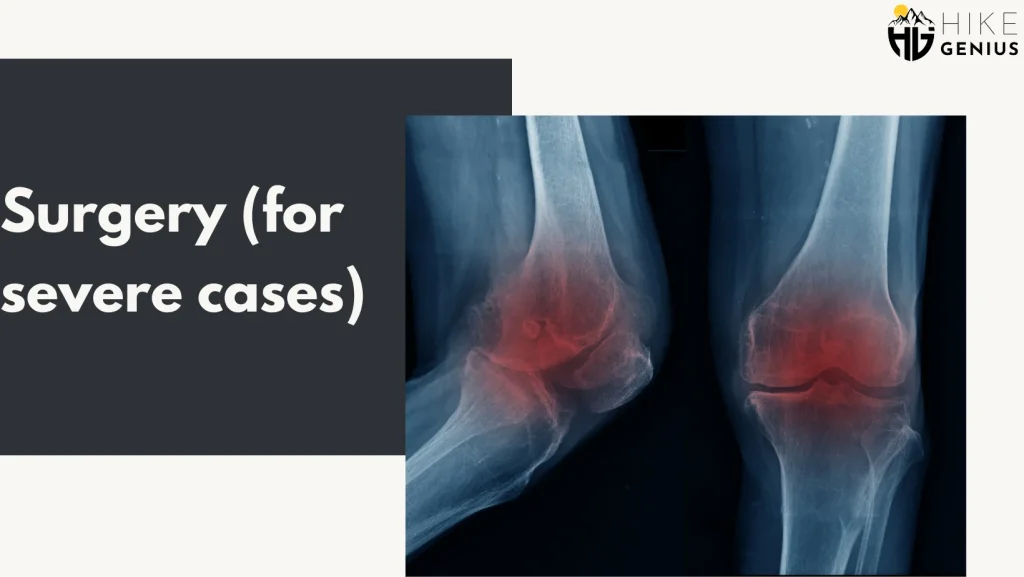
Surgery for severe knee injuries such as ligament tears or cartilage damage may be necessary. Your doctor will evaluate your condition and recommend the appropriate surgical procedure.
Conclusion
In conclusion, knees hurt when hiking or walking downhill due to knee injury, inflammation, strain, arthritis, or other conditions. Knee joint pain can be treated with warm-up and stretching exercises, knee braces, hiking poles, other supports, walking changes, rest and recovery, medical treatments, and first-aid methods like the RICE method. See a doctor for severe or long-term knee problems to prevent further damage and heal the knee.
Knee pain shouldn’t keep you from enjoying nature. You can stay active and keep your knees healthy with proper care. To avoid knee pain, wear proper shoes, wear walking sticks, and stay fit.
In conclusion, you must understand what causes knee problems when hiking or walking downhill and how to treat them to avoid further injuries. See a doctor if your pain is severe or long-lasting. Maintain your knees and enjoy the outdoors.
Frequently Asked Questions
Is uphill or downhill worse for knees?
In general, going downhill is harder on the knees than going uphill because it puts more pressure on the joint. When you walk or run downhill, your knees have to work harder to slow you down and keep you from falling. Over time, this extra stress on the joint can lead to more wear and tear.
Why does my knee hurt when I hike?
When you hike, your knee may hurt because it gets hit and stretched repeatedly, especially when going downhill. This can cause inflammation, tired muscles, and even injuries. Knee Disturbance can be avoided by wearing the right shoes, stretching, and exercising to build strength.

